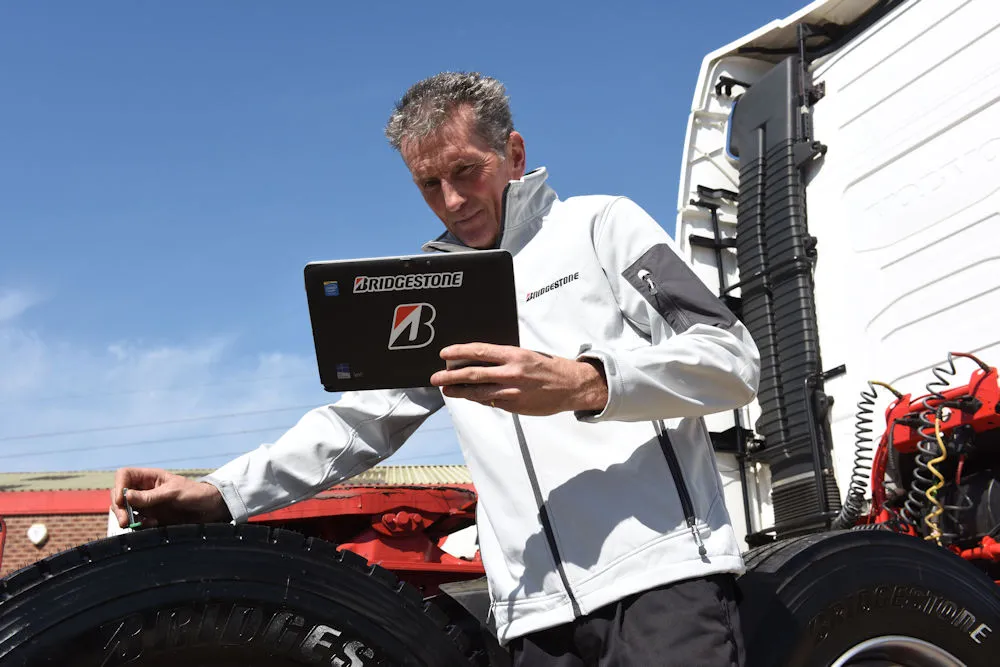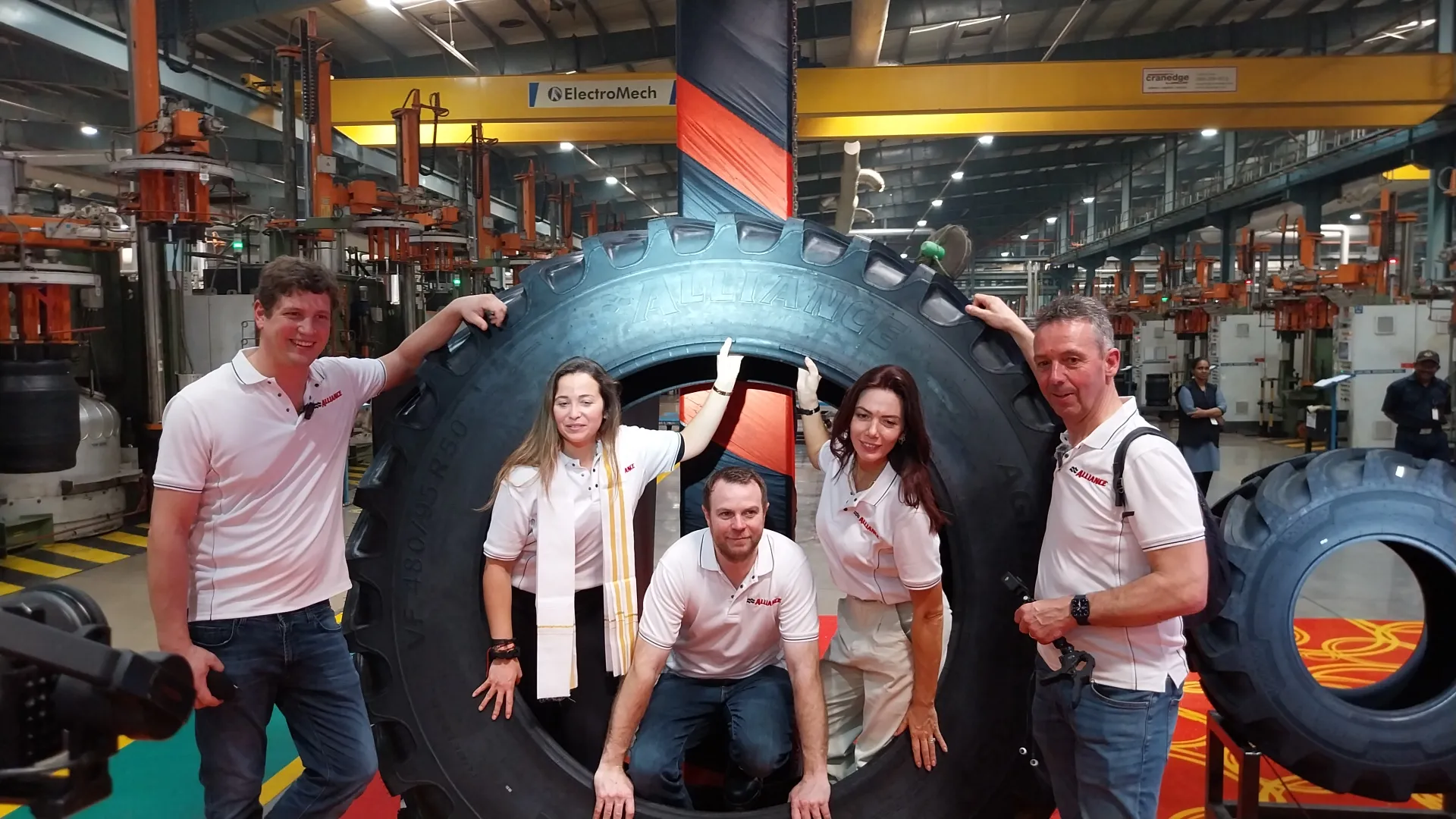In this feature we would ask Bridgestone’s UK Technical Manager, Pete Moulding about the best practice for tyre maintenance.
Bridgestone Talks about best practice in tyre maintenance
It is an open question but perhaps we can consider: How often should tyres be inspected for pressure and damage?
Moulding opens with this response; “Tyres should be examined before each journey for signs of damage. These signs include cuts, bulges, cracks, irregular wear or deformation of the tyre. If you are concerned by the appearance of your tyres, have them checked by an expert (or local dealer). Ideally pressures should be checked before each journey, but failing this, at least every two weeks.

Asked about the warning signs of imminent tyre failure that operators should be aware of, Moulding responded; “Any bulges found on tyres usually indicate the tyre has suffered damage or a separation and would need to be inspected to ensure roadworthiness. In use, if the tyre becomes excessively noisy or you feel a vibration, this can indicate imminent tyre failure. With the mandatory implementation of Tyre Pressure Monitoring Systems, these will signal when a tyre has lost pressure and should prevent a lot of sudden deflation events, however we would recommend regular inspections to ensure the safety of the tyres.”
In the past, Commercial Tyre Business has spoken with fleet managers about the benefits of digital tyre management, and whilst larger fleets on regular routes with regular loads have seen benefits, smaller fleets operating with different loads and different drivers on varying routes have been less confident in that aspect of tyre management. So, Commercial Tyre Business asked Moulding:Does load and route have an impact on how tyres should be maintained?
“The stress to a tyre is affected by the load, speed, and inflation pressure,” states Moulding. “Thus if the load increases, the inflation pressure also needs to increase, and possibly the speed will need to decrease. The tyres should always be maintained at the optimum pressure to avoid overheating, fatigue, irregular wear and stress. Knowing the route will mainly affect the choice of tyre, using the correct product for the road (Highway/Regional/Off-road/Winter) ensures the customer has the optimal tyre for their operation. However tyre husbandry can also minimise damage i.e. if operating on a very stony route, taking time to eject stones will prevent them drilling into the casing, and requiring premature change.”
If a tyre needs repairing, what are the criteria to ensure that the repair is legal, and carried out effectively? This is asked in the light of some questionable practices found on social media.
Moulding responds; “The tyre should be inspected thoroughly for any signs of damage or fatigue which might indicate a weakness in the casing, prior to repair. In addition, the tyre should be repaired in accordance with BSAU159g to ensure a safe repair within repairable limits. Equally as important, the tyre should be inflated carefully within a cage with any persons at a safe distance, in case an undetected weakness in the tyre causes the tyre to fail on inflation.”
In conclusion, Moulding says; “Properly maintained tyres will offer the best value for money, plus safety for drivers and other road users. Properly maintained tyres will waste less energy, improving fuel efficiency, wear slower maximising tyre life, reduce breakdowns due to avoidable tyre failure, and maximise grip allowing the driver to maintain speed safely and reach destinations on time. With optimal grip and minimising tyre failures, this will result in less incidents, improving road safety for everyone.”








